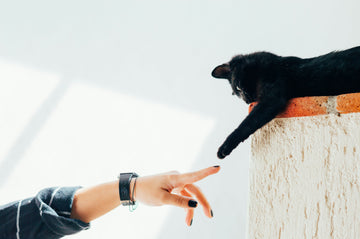That adorable stretch. The satisfying scratch on a post. The gentle kneading before a nap.
These are not just habits — they are expressions of your cat’s instincts, comfort, and identity.
Yet some cat owners, perhaps out of fear, frustration, or misinformation, still consider declawing.
If you’re one of them — pause. Read on. Because what seems like a quick fix is, in truth, a lifetime of silent suffering.
Declawing is Not What You Think
Let’s clear one major misconception: declawing is not trimming nails. It’s not even just removing claws. It is the amputation of the last bone of each toe — the equivalent of cutting off each of your fingertips at the last knuckle.
Painful to imagine? For your cat, it’s worse. This irreversible surgery leads to trauma that runs far deeper than the skin. Cats wake up confused, broken, and in pain — not just for days, but for weeks and often, for life.
Some cats cry out for hours. Others sit motionless, trying to make sense of their mutilated paws. Some slam against their crates in agony. And when they try to walk again, everything has changed.
Three Reasons Declawing is Cruel — Beyond the Obvious
1. Declawed Cats Walk Differently — and Suffer For It
Cats are digitigrade animals — they walk on their toes, not their feet. That graceful, quiet stride? It’s all thanks to their toe bones. When those are removed, a cat’s entire posture shifts unnaturally. The result? Chronic pain, joint damage, and early arthritis in the elbows, hips, and spine.
What begins as a “simple surgery” may end with daily painkillers, expensive treatments, and a drastically shortened lifespan.
2. You’re Removing Their First Line of Defense
A cat’s claws are not weapons of destruction — they are tools of survival. In nature, they help a cat climb to safety, ward off attackers, and catch prey. Even in your home, they provide security and confidence.
When you take away a cat’s claws, you take away their sense of control. You leave them vulnerable — not just to others, but to fear, anxiety, and a life lived on edge.
And if your cat ever escapes outdoors? A declawed cat is as defenseless as a bird without wings.
3. Declawing Leads to Biting, Fear, and Behavioral Issues
Without claws, cats can no longer swipe to say “back off.” Instead, many resort to biting — hard. It’s not aggression; it’s desperation.
Cats who once used gentle scratches now respond with painful bites when stressed or scared.
Declawed cats are also more likely to suffer from anxiety, litter box avoidance, and social withdrawal. The trauma doesn’t just affect their paws — it reshapes their personality.
Still Considering It? Ask Yourself This…
Would you rather replace the couch — or your cat’s trust?
Is a scratch on the wall worth a scar on their soul?
There are humane, effective alternatives to protect your furniture and your sanity:
-
Scratching posts placed in high-traffic areas
-
Nail caps that cover the claws safely
-
Regular trimming and positive reinforcement
-
Behavioral training with love and patience
These small steps keep your cat healthy, happy, and whole.
Let’s Be Their Voice
Your cat cannot tell you that they’re scared. Or hurting. Or confused.
But you can choose not to put them through it in the first place.
Declawing is banned in dozens of countries. Cities and states across the U.S. are following suit. You can be part of that change — by choosing compassion, by educating others, and by standing up for those who can’t speak.
Keep the claws. Keep the trust. Keep the cat whole.
Because love doesn't mutilate — it protects.






